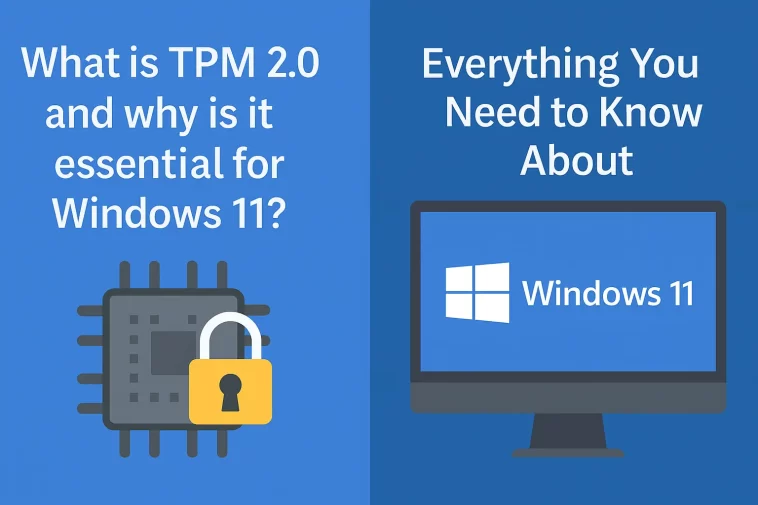The Trusted Platform Module (TPM) has suddenly become a buzzword in the technology world, largely due to its mandatory status for running Microsoft’s latest operating system, Windows 11. This seemingly small hardware component plays a massive role in modern computing security and is a cornerstone of Microsoft’s vision for a more secure future.
The Fundamentals: Understanding the Trusted Platform Module (TPM)
The TPM is not a piece of software; it is a physical cryptoprocessor—a dedicated, tamper-resistant chip located on your computer’s motherboard or integrated into your CPU (as firmware).
1. Definition and Core Function
- What it is: The TPM is a secure crypto-processor designed to carry out cryptographic operations. It stores sensitive information like passwords, certificates, and encryption keys securely.
- Core Principle (Trustworthiness): Since the keys and measurements are stored within the hardware itself, they are isolated from the operating system and any potential malware trying to access them. This makes it far more secure than relying solely on software-based encryption.
2. Key Security Functions
The TPM performs several critical security functions:
- Key Generation and Storage: It generates and securely stores cryptographic keys (e.g., for disk encryption). These keys never leave the TPM chip.
- Platform Integrity Check: It performs hardware and firmware checks during the boot process. The TPM takes cryptographic measurements of your system’s boot components, ensuring that no unauthorized code (like a rootkit) has tampered with the system before the OS loads.
- Authentication: It works with features like Windows Hello to securely store biometric data and PINs.
🛡️ TPM 2.0 vs. TPM 1.2: The Major Difference
While the TPM concept isn’t new, the transition to version 2.0 brought significant improvements that are central to Windows 11’s security model.
- Algorithms (Expertise): TPM 2.0 mandates the use of modern, robust cryptographic algorithms, such as SHA-256, which are considered more secure than the older algorithms used by TPM 1.2.
- Flexibility: TPM 2.0 offers greater flexibility in terms of cryptographic configuration and support for different cryptographic libraries.
- Certification: TPM 2.0 offers a better and more secure process for device attestation—cryptographically proving to a service that your device is legitimate and untampered.
The shift to 2.0 is an essential security upgrade, which is why Microsoft made it a hard requirement.
🔑 Is TPM 2.0 Required for Windows 11?
The answer is a definitive Yes. TPM 2.0 is a mandatory hardware requirement for installing and running the official version of Windows 11.
Why Microsoft Made It Mandatory (Authoritativeness)
Microsoft’s decision to make TPM 2.0 non-negotiable stems from a core focus on Zero Trust security architecture and protecting against increasingly sophisticated threats:
- Protecting Against Rootkits: The platform integrity checks performed by TPM 2.0, in conjunction with Secure Boot, ensure that the boot process is clean and free of malware (like rootkits) that load before the OS.
- Enhancing Data Encryption: TPM 2.0 is vital for full-disk encryption features like BitLocker. If the encryption key is software-based, malware can steal it. If it’s tied to the TPM chip, it’s safe.
- Modern Authentication: It provides a secure vault for authentication data, making features like Windows Hello more resilient against attack.
How to Check and Enable TPM 2.0
- Checking Status: You can check your TPM status by pressing Win + R and typing
tpm.msc. The resulting window will tell you if the chip is present and which specification version it uses. - Enabling: In most modern PCs (especially those from the last 5-7 years), the TPM 2.0 functionality is present but often disabled by default in the system’s firmware (UEFI/BIOS). You must look for settings like PTT (Platform Trust Technology) for Intel CPUs or fTPM (Firmware TPM) for AMD CPUs within the security or advanced settings of your motherboard’s UEFI interface.
Key Takeaway: If your PC is otherwise compliant but fails the Windows 11 check, the issue is often a disabled TPM 2.0 feature in your UEFI settings, not a missing chip. Enabling the firmware TPM is the most common fix for Windows 11 incompatibility.

